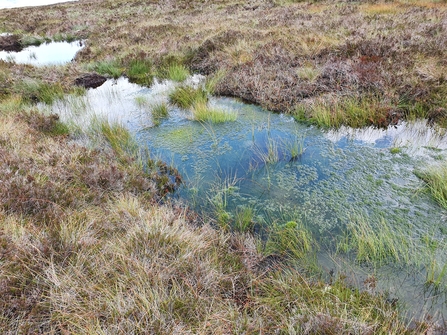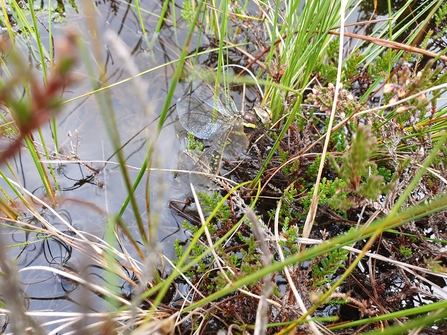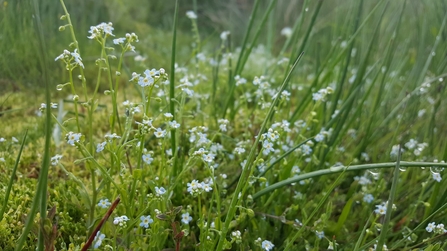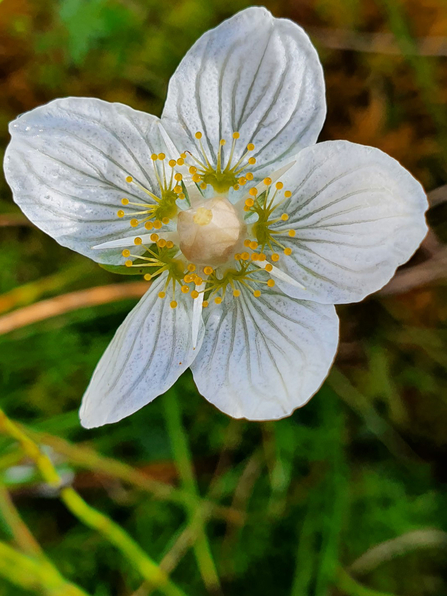Habitats include wet, dry and damp heaths; acid, calcareous and semi-improved grasslands; fens and springs; planted woodlands and naturally regenerating scrub. However, the dominant habitat, coating over half of the reserve, is blanket bog.
Introduction to Whitelee Moor

Bog pools formed by the dams on Whitelee Moor.
Repairing damaged peat has been an increasing focus for us in recent years, and we are just about to embark on a huge restoration project: reshaping peat cliffs and installing thousands of dams to heal eroding peat channels, whilst providing ideal conditions for countless invertebrates, amphibians and birds. Pools created during previous rounds of restoration have been quickly colonised, with frogs laying spawn within weeks, dragonflies breeding within months, and birds such as golden plover taking advantage of the abundant invertebrate life that abounds. The repairs should hold vast quantities of water on the hill, slowly releasing this water over drier periods, and preventing sediment from entering the river Rede and Catcleugh reservoir.

Common Hawker laying eggs at Whitelee Moor.
Since buying the reserve 25 years ago we have planted over 35ha of site native trees to mimic natural woodland. This combined with succession from remnant trees and scrub between planted areas, following reduction in livestock, has made these areas feel more natural. Sheep were removed at the turn of the year, we aim to increase the cattle herd, this should lead to further natural succession across the reserve. We will be planting further trees, concentrating on site native species missing from the reserve. Seeds and cuttings are being sourced from as close to the reserve as possible. These will be planted in small numbers in strategic locations, then left to spread naturally over coming centuries, creating an open mosaic so loved by many rare species.
Grasslands will be restored over the next few years, with a stock free period in summer to allow flowers, especially tall herbs, a longer growing season to flower. Species rich acid grassland, purple moorgrass and rush pasture, and calcareous grassland will be sown with seeds and plug plants added to compliment rarities already found such as pale forget-me-not, a speciality of the border region.

Pale Forget-Me-Not on Whitelee Moor.
The aim is to increase cover of existing plants such as black knapweed grass-of-parnassus and wild angelica and introduce plants which would further improve the grassland habitats.

Grass of Parnassus Parnassia palustris Whitelee Sept 2022.
These additional species are highly unlikely to establish on their own as for most the seed is not very mobile and/or there is not a source of seed close enough to the site for re-colonisation to take place without intervention.
We are teaming up with Flexigraze to deliver cattle grazing across the reserve (excluding sensitive bog habitat). Over the next few years we will trial NoFence collars on the cattle, if all goes to plan we will then remove the internal fencing.


